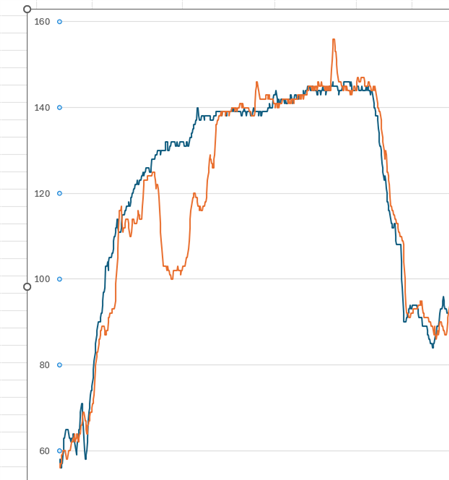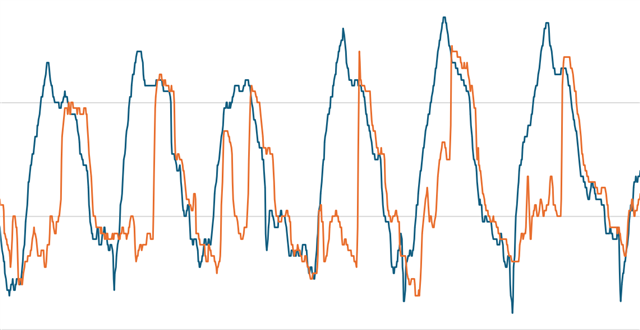There are a lot of posts on this forum of users experiencing erratic and/or unreliable heart rate readings from the optical heart rate sensor on the FR265. I am one of those users. I previously had a FR45 and do not recall any major HR inaccuracies from the OHR sensor on that watch. When I upgraded to the FR265 (or what I thought was an upgrade), I was shocked and puzzled that the heart rate reading was all over the place -- usually it was too low (based on what I know by feel) and often jumped up by 10, 15 or more beats from one reading to the next. The "solution," if you want to call it that, was to wear a chest strap. (FWIW, I tried multiple wrist positions and strap tightnesses with no improvement.) But again, I didn't seem have this issue with my FR45, at least not to this degree, so what is going on with the FR265?
I decided to conduct an experiment to see just how bad it is. I also have an Edge 830 that I use for cycling. So I brought my Edge 830 to the gym for a recent strength workout. I wore my chest strap and connected it to my Edge. My FR265 was on my wrist with the optical sensor reading my heart rate. I started activities on both devices simultaneously. After the workout, I downloaded the .csv data into Excel and plotted both sets of HR on the same chart.
Here are the results. The blue line is my heart rate as recorded by the Edge with a chest strap. The orange line is the FR265 with optical heart rate. The workout started with a casual 10-minute steady 7-MPH jog on the treadmill. The peaks that follow are my sets of lifts.

Note the gap between the Edge and the FR265 -- especially during my treadmill warm-up. What is going on here?? The FR265 was jumping up and down randomly. I have no idea what that random spike is.

Here is my HR during some of the lift sets. Again, the FR265 HR was all over the place and the gap between the two is huge.

Some stats:
Greatest jump from previous reading: Edge: 6 BPM. FR265: 18 BPM. (How can my HR jump 18 BPM within one second? I had 13 readings where it jumped seven or more BPM within one second.)
Average difference between the two devices: 6.27 BPM
Greatest difference between the two devices: 38 BPM
Percentage of readings with more than 10 BPM difference: 20.1%
What this boils down to is that the OHR sensor on the FR265 cannot be trusted and is, in effect, worthless. The question therefore is what, if anything, Garmin is going to do anything about this. Considering the FR265 is no longer a "current model" on Garmin's website and has been superceded by the FR570 as the mid-tier running watch, I'd say the answer to that question is "nothing."


